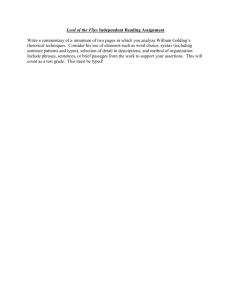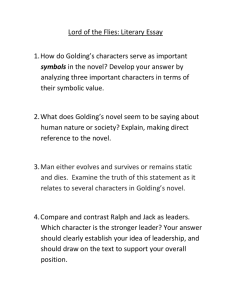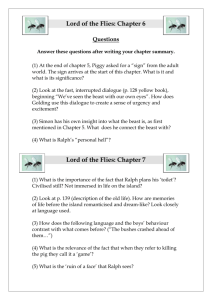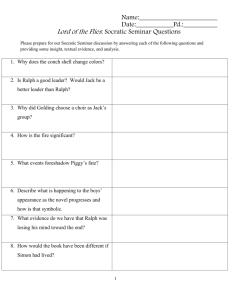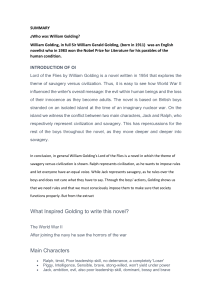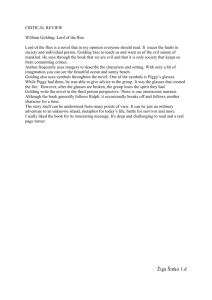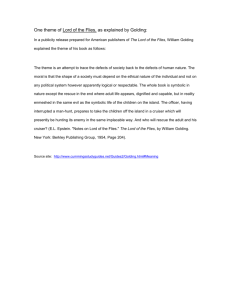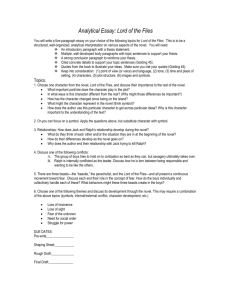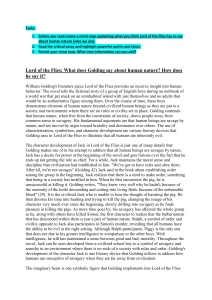Document 14390745
advertisement
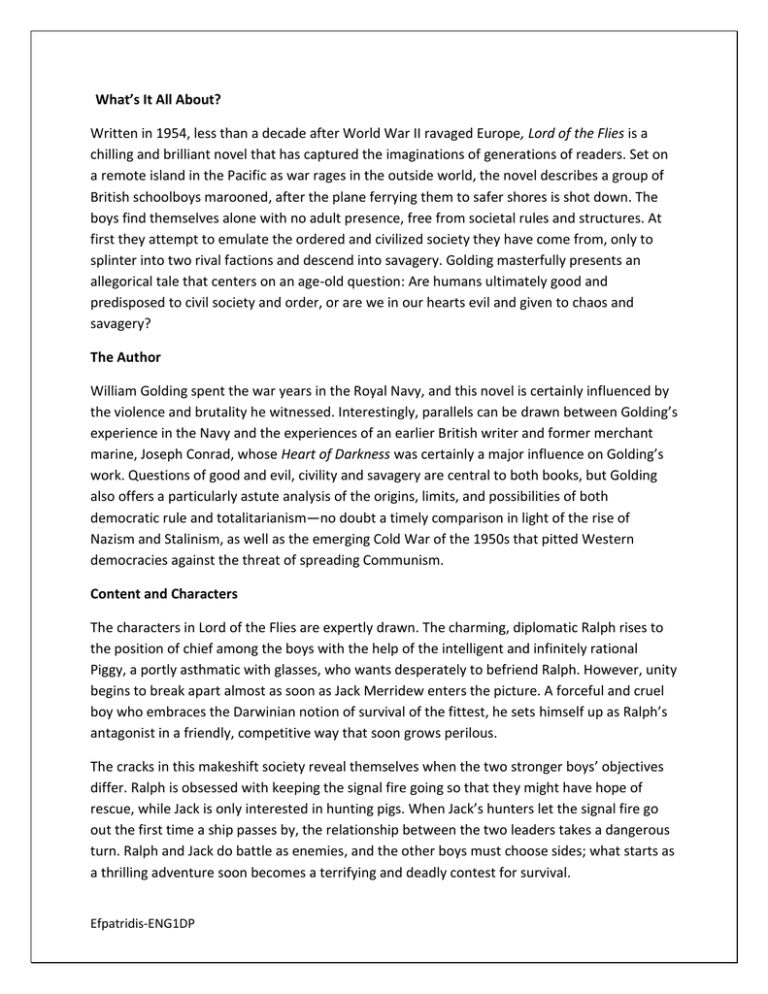
What’s It All About? Written in 1954, less than a decade after World War II ravaged Europe, Lord of the Flies is a chilling and brilliant novel that has captured the imaginations of generations of readers. Set on a remote island in the Pacific as war rages in the outside world, the novel describes a group of British schoolboys marooned, after the plane ferrying them to safer shores is shot down. The boys find themselves alone with no adult presence, free from societal rules and structures. At first they attempt to emulate the ordered and civilized society they have come from, only to splinter into two rival factions and descend into savagery. Golding masterfully presents an allegorical tale that centers on an age-old question: Are humans ultimately good and predisposed to civil society and order, or are we in our hearts evil and given to chaos and savagery? The Author William Golding spent the war years in the Royal Navy, and this novel is certainly influenced by the violence and brutality he witnessed. Interestingly, parallels can be drawn between Golding’s experience in the Navy and the experiences of an earlier British writer and former merchant marine, Joseph Conrad, whose Heart of Darkness was certainly a major influence on Golding’s work. Questions of good and evil, civility and savagery are central to both books, but Golding also offers a particularly astute analysis of the origins, limits, and possibilities of both democratic rule and totalitarianism—no doubt a timely comparison in light of the rise of Nazism and Stalinism, as well as the emerging Cold War of the 1950s that pitted Western democracies against the threat of spreading Communism. Content and Characters The characters in Lord of the Flies are expertly drawn. The charming, diplomatic Ralph rises to the position of chief among the boys with the help of the intelligent and infinitely rational Piggy, a portly asthmatic with glasses, who wants desperately to befriend Ralph. However, unity begins to break apart almost as soon as Jack Merridew enters the picture. A forceful and cruel boy who embraces the Darwinian notion of survival of the fittest, he sets himself up as Ralph’s antagonist in a friendly, competitive way that soon grows perilous. The cracks in this makeshift society reveal themselves when the two stronger boys’ objectives differ. Ralph is obsessed with keeping the signal fire going so that they might have hope of rescue, while Jack is only interested in hunting pigs. When Jack’s hunters let the signal fire go out the first time a ship passes by, the relationship between the two leaders takes a dangerous turn. Ralph and Jack do battle as enemies, and the other boys must choose sides; what starts as a thrilling adventure soon becomes a terrifying and deadly contest for survival. Efpatridis-ENG1DP The tide turns against Ralph when the others start to fear “beasties.” Ralph dismisses their fear, while Jack understands that by harnessing it he can empower himself. Simon, the mystical figure in the story, is the first to discover the true nature of the dreaded beast. In the early stages of a seizure, Simon experiences a vision. Jack and the other hunters have brutally killed a nursing sow and impaled her head on the end of a stake, leaving it as a kind of offering to the beast. Bloody and blackening in the sun, the decapitated head attracts flies and in this way speaks to a disoriented Simon, introducing itself as the beast. Simon understands that the Lord of the Flies represents no external beast, but the darkness that lingers in the hearts of us all. Purpose and Aim There is no shortage of interpretations of this complex novel. No doubt all of these interpretations can be supported to some extent by the text of Lord of the Flies, which probably explains part of the novel’s timeless appeal. The characters, objects, and events are all imbued with symbolic significance that communicates the novel’s essential themes. By depicting the broader human struggle through the actions of children left to their own devices, Golding illustrates the fundamental dichotomy of man’s nature. On one hand, we crave society and order, and on the other, we act selfishly, seek control over others, and indulge in brutality. Lord of the Flies ventures far beyond the confines of life on the tiny island and examines questions that lie at the very heart of what it means to be human. Golding answers none of them definitively in Lord of the Flies, leaving readers to examine for themselves the essential nature of the human condition. Efpatridis-ENG1DP
